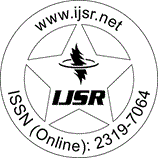Downloads: 3 | Views: 70 | Weekly Hits: ⮙2 | Monthly Hits: ⮙2
Research Paper | Nuclear Research | Bangladesh | Volume 13 Issue 12, December 2024 | Popularity: 5.2 / 10
Shielding Effectiveness of Some Composite Materials Alternative to Lead
Md. Amzad Hossain
Abstract: Lead provide effective shielding against radiation because lead has a high density and atomic number, allowing it to efficiently absorb x-ray photons. Lead aprons are radiation protection garments used to protect patients from unnecessary exposure and radiology staffs from occupational exposure. Besides good radiation protection lead is considered a heavy metal and aprons made from this material can be cumbersome and tiring to wear, especially for extended periods. Also lead is highly toxic substance posing environmental and health risks if not handled and disposed of properly. Researchers are actively exploring alternatives to lead in radiation shielding aprons, with materials like tungsten, bismuth, barium sulfate, and certain polymer composites emerging as potential replacements due to their comparable radiation shielding effects while being less toxic than lead. Three combinations of lead alternative composite materials W-Sn-Ba-PVC, W-Sn-Cd-PVC, Sn-Gd-W-PVC investigated in the energy range of diagnostic radiology in broad beam geometry. Radiation shielding effects of these materials in terms of radiation attenuation was assessed between 30-60 keV and the results compared with standard lead containing composite material. No lead alternative composites provide better protection in low energie 30 keV. Composite W-Sn-Ba-PVC provide considerable attenuation but always lower than standard. Composite material W-Sn-Cd-PVC showed better attenuation within 40-60 keV and Sn-Gd-W-PVC showed better attenuation at 60 keV. Thus lead alternative composite shields could be effective for shielding against x-ray energies in the range of 40 to 60 keV.
Keywords: shielding effectiveness, radiation shielding, alternative to lead, composite materials, Monte Carlo simulation
Edition: Volume 13 Issue 12, December 2024
Pages: 1812 - 1817
DOI: https://www.doi.org/10.21275/SR241222113205
Make Sure to Disable the Pop-Up Blocker of Web Browser
